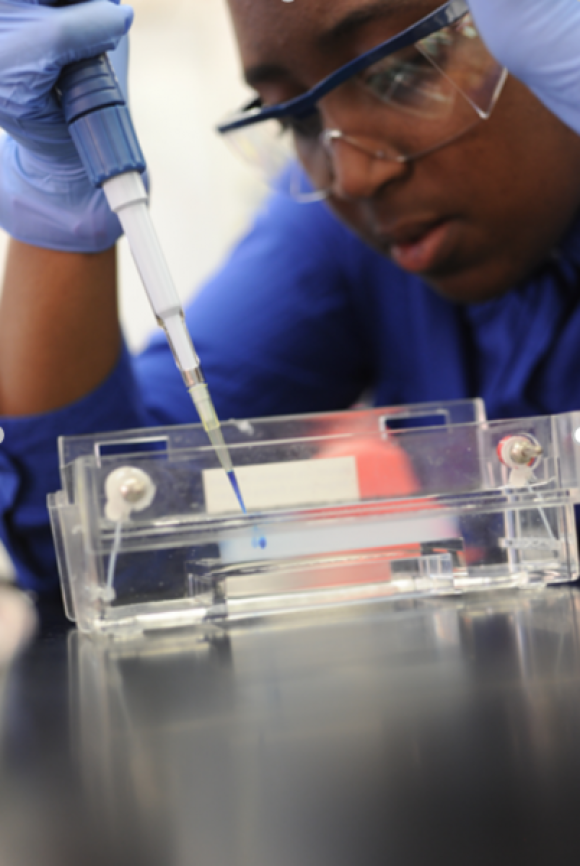Pipetting is a crucial skill in biotechnology. Doing it properly helps ensure better results in the lab, prolongs the life of the equipment, and reduces waste of expensive reagents. These skills are fundamental; none of the more advanced lab activities can be successful without a solid foundation in pipetting!
Because students will imitate whatever they see, it is also important for adults to model good pipetting techniques when demonstrating! Our lab technicians recently compiled the following list of useful tips and tricks to help everyone master the use of a micropipette!
WHEN PIPETTING, DO…
- Ensure the pipette is set to the correct volume.
- Practice feeling for the first and second stops before [adding the tip and?] using the pipette with reagents.
- Place an elbow on the table or bench for stability.
- Guide the tip (not the end!) with non-dominant hand’s fingers if your hands are trembling.
- Examine the tip after picking up a sample to ensure it was actually aspirated.
- Pipette very small volumes onto the side of the tube so they are easier to see.
WHEN PIPETTING, DO NOT…
- Set the pipette above or below its range.
- Let someone else hold the tube.
- Put the micropipette down with sample in the tube, or hold it upside down.
- Let the plunger snap back into place; be gentle!
USEFUL MANTRAS FROM OUR TEACHERS AND LAB TECHNICIANS...
- “Once to pick up, twice to drop off!” for using the first and second stops
- “Never dip without a tip!” for changing tips
- “Hover, pull up, let go!” to avoid aspirating buffer when pipetting into a gel box
Share your favorite pipetting tips, tricks and mantras by tweeting #pipetting101 and #ABEPDI to @ABEProgOffice.
